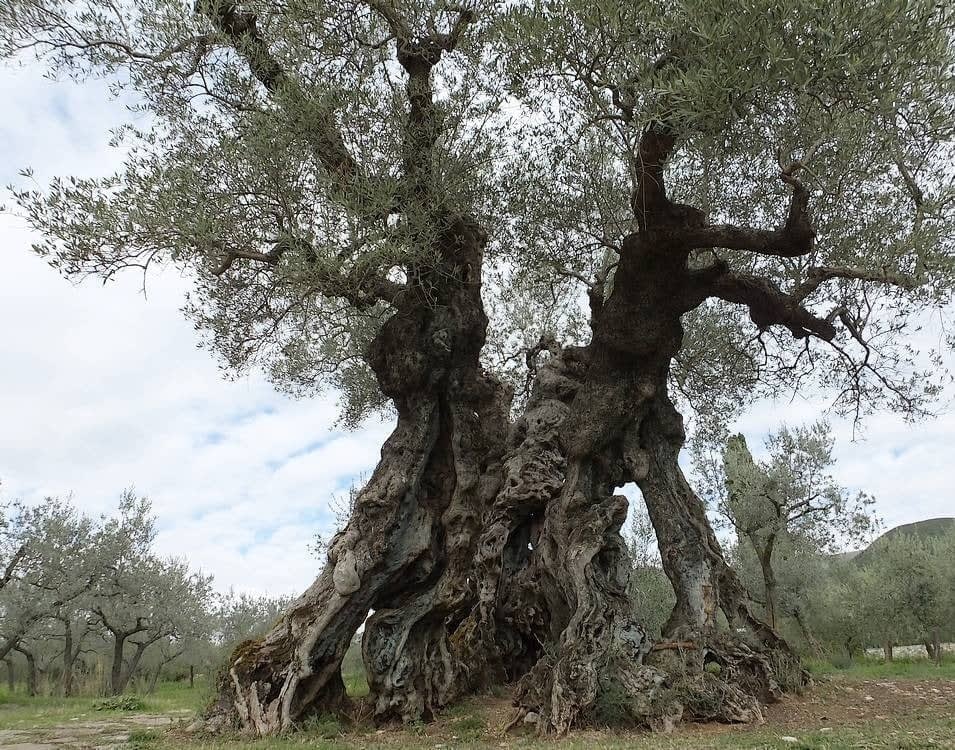L’Olivo di Sant'Emiliano: A 1,800-Year-Old Symbol of Umbria's Olive Tradition

Umbria’s oldest millenary olive tree is situated in the hamlet of Bovara di Trevi, an ancient town on the famous Olive Path connecting Spoleto with Assisi, less than an hour south of the regional capital of Perugia.
L’Olivo di SantEmiliano is over 1,800 years old and continues to thrive a few hundred meters from the 12th-century Benedictine Abbey of Bovara.
It is important to preserve thousand-year-old olive trees because they are a direct source of the longevity and persistence of agricultural culture and local traditions.
“La Passió says that Bishop Miliano, after suffering various tortures, was tied to a young olive tree and beheaded in the year 304,” Daniela Rapastella, the head of Trevi’s culture and tourism administration, told Olive Oil Times.
Miliano came to Italy from Armenia. His name was Italianzed to Emiliano when Pope Marcellinus consecrated him. After his execution, he became the patron saint of Trevi.
See Also:Unveiling the Mystery and Magic Surrounding Tuscany’s Olivo della Strega“For the local community, L’Olivo di Sant’Emiliano is a symbol of strong devotion because it is linked to the city’s patron saint,” Rapastella said.
Indeed, the millenary tree has recently been registered as a protected tree and fenced off so tourists can admire it without damaging it.
“Historical facts and popular beliefs state that the olive tree has survived several frosts over the centuries, always bearing abundant fruit,” she added. “It also resisted the most intense frosts, which instead caused the drying out of almost all the other olive trees, some of which were more than centuries old.”
According to Rapastella, locals continue to harvest olives from the tree and mill them into unique olive oil due to the olive tree’s ancient genetics.
“The Sant’Emiliano olive tree, according to the scholar Guido Bonci, is genetically placed in a transition position between the Olivastro and Moraiolo cultivars,” she said.
Moraiolo is the dominant olive variety in the region, making up more than 60 percent of any extra virgin olive oil produced under the Umbria Colli Assisi-Spoleto Protected Designation of Origin certification.
While there is growing debate about the accuracy of certain dating methods for ancient olive trees, Rapastella is confident that authorities followed the best scientific processes to obtain an accurate age.
She said researchers took samples from the root system to identify the oldest part of the tree. The oldest portions of the truck have long been damaged by parasites and removed via the slupatura, or stripping, pruning technique, eliminating decaying parts of a healthy tree.
“However, I cannot exclude that even older material may be found in another part of the roots,” she said.
Leading experts in the field radiocarbon-dated the root core samples, determining that the tree was about 1,830 years old with a margin of error of 260 years. This puts the date of its germination between 96 BCE and 425 CE.
“This age is extraordinarily interesting because until now, it was believed that the maximum age of olive trees at this latitude could not exceed 1,500 years,” Rapastella said.
“It is important to preserve thousand-year-old olive trees because they are a direct source of the longevity and persistence of agricultural culture and local traditions,” she added.








